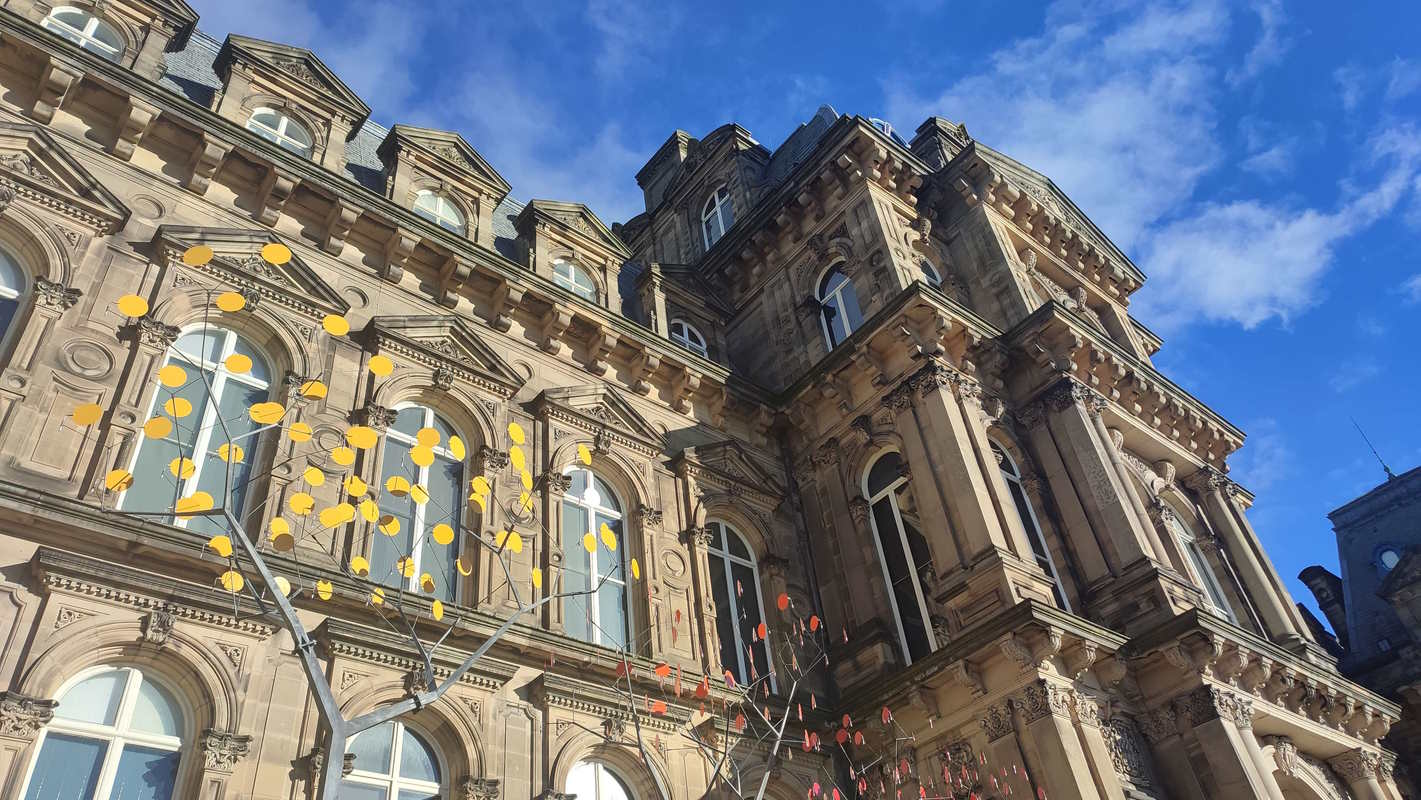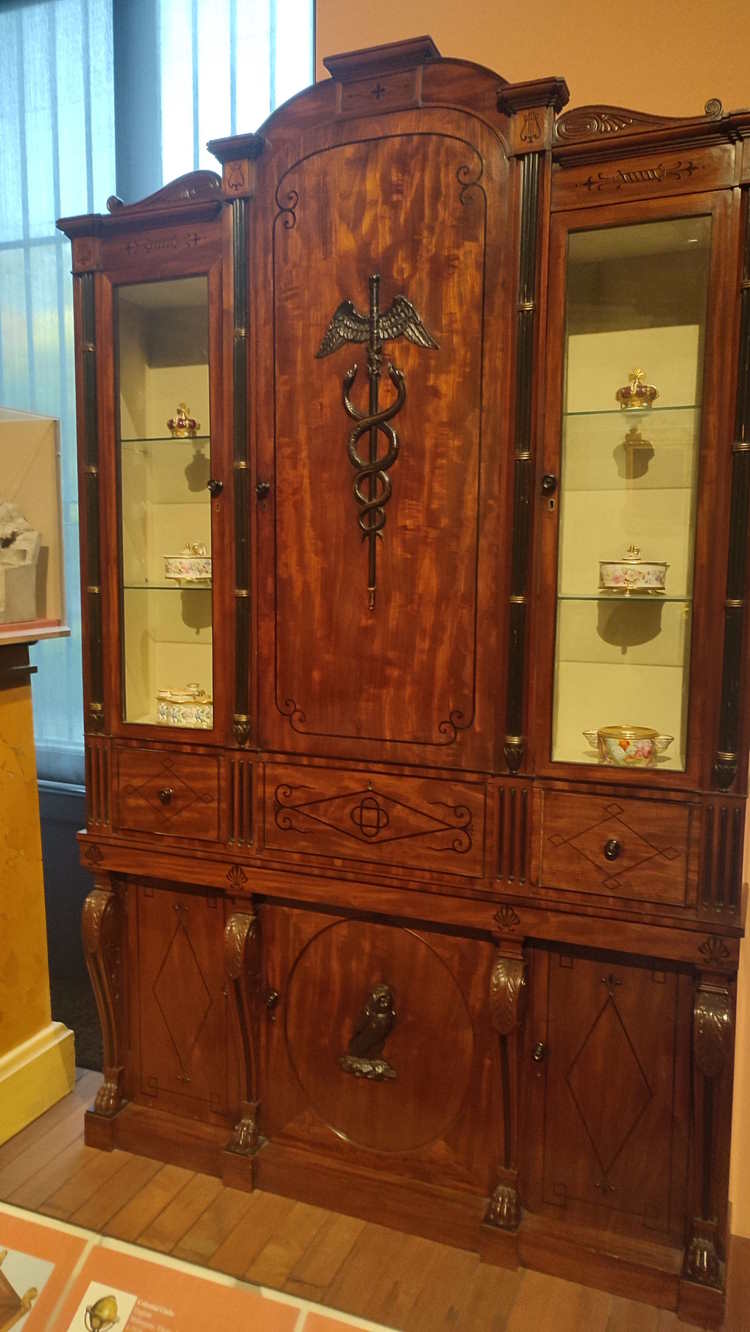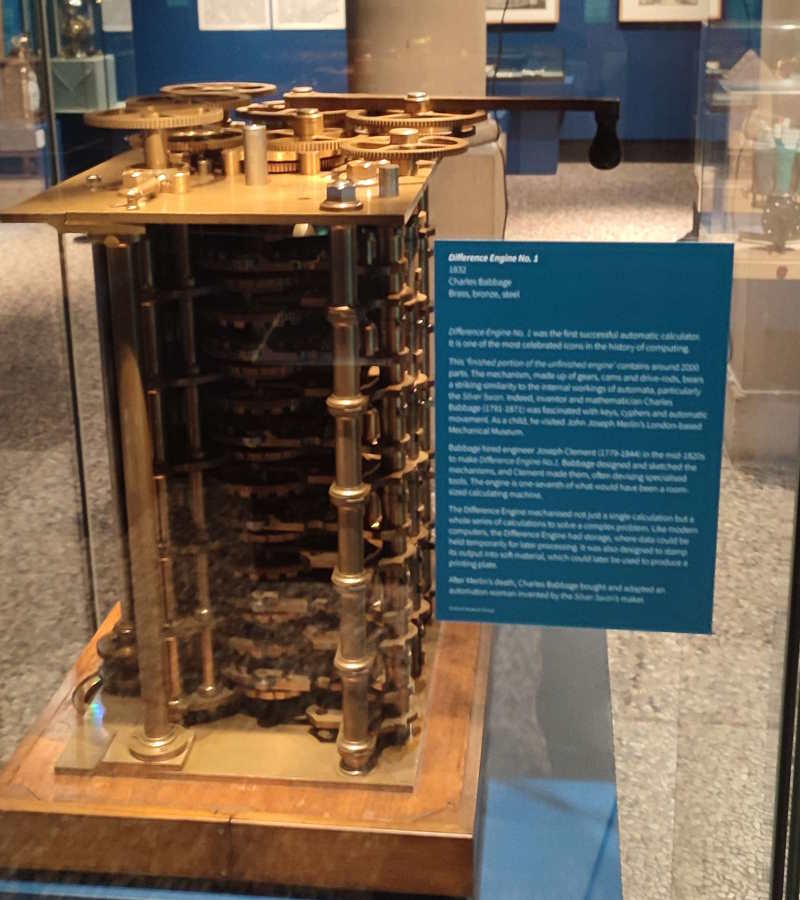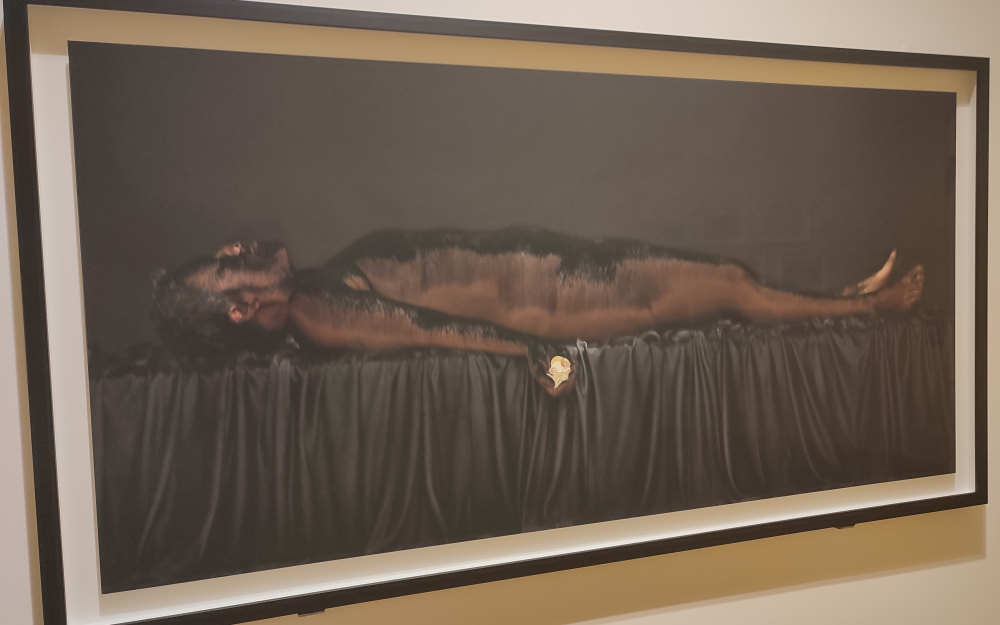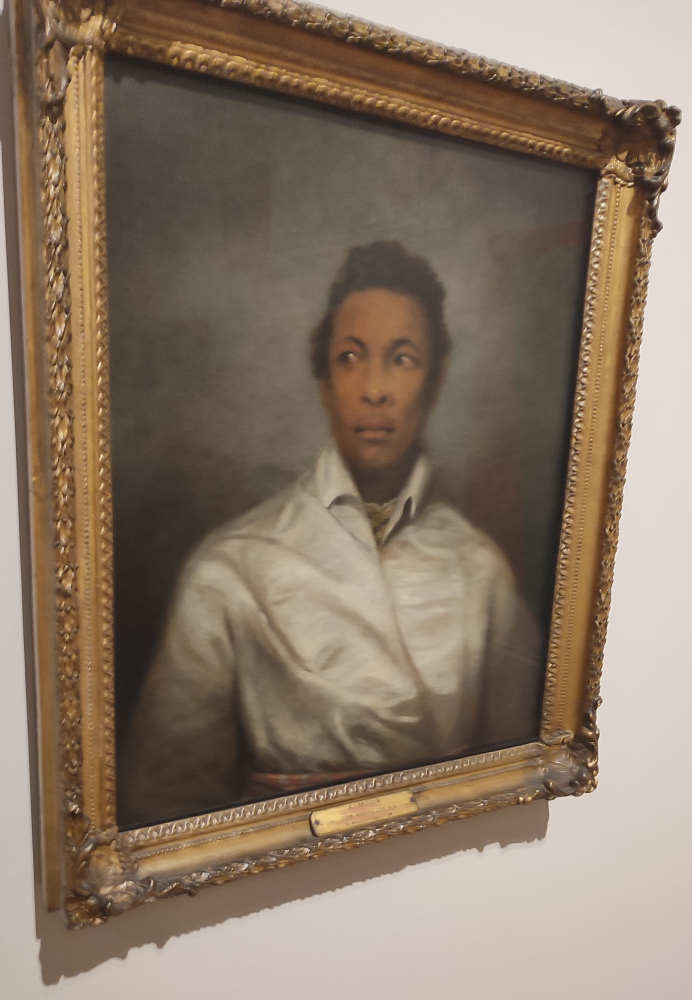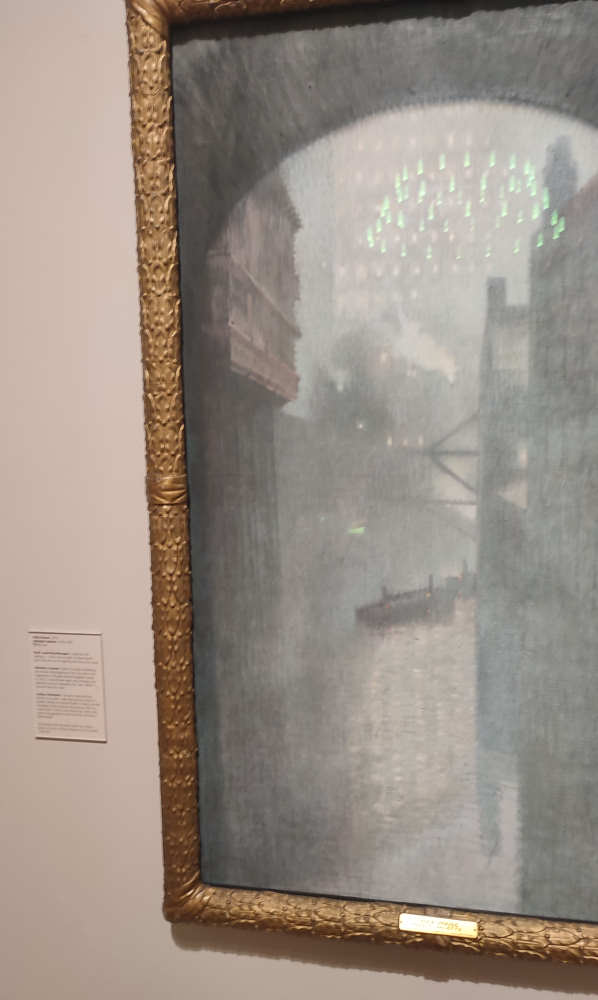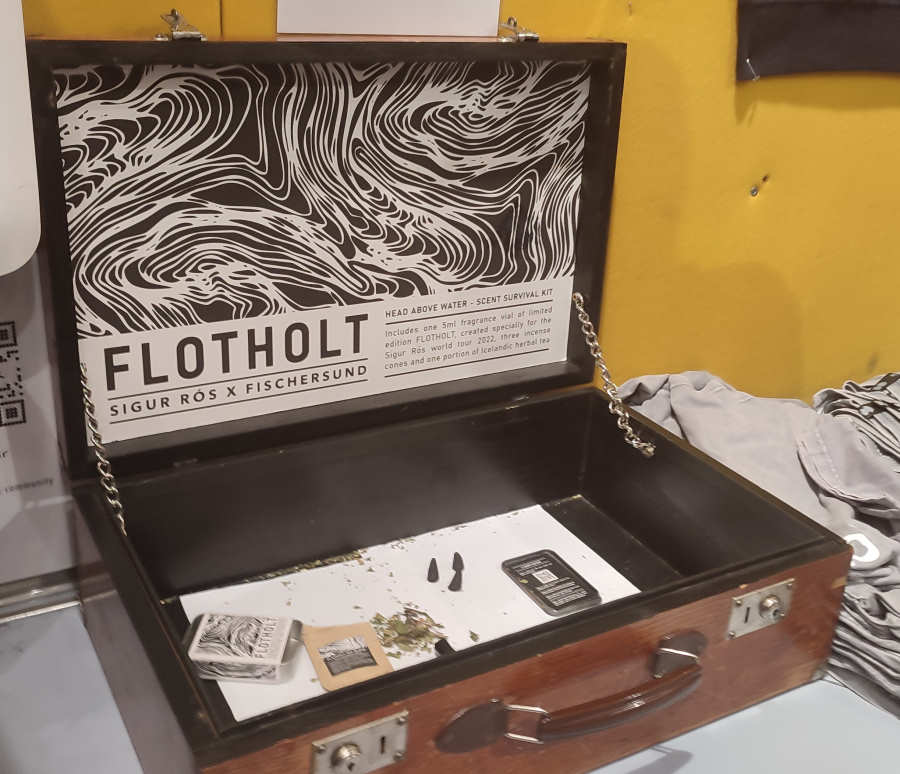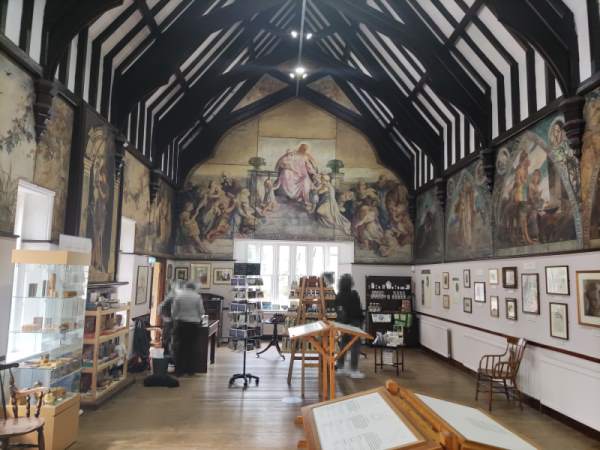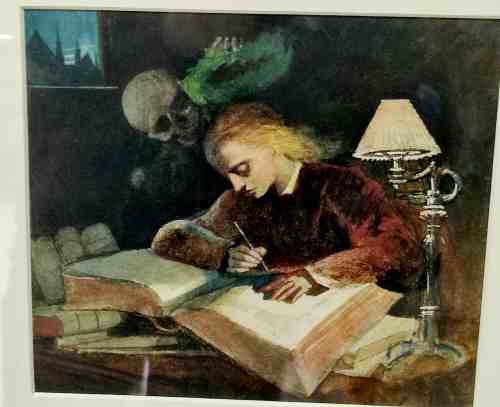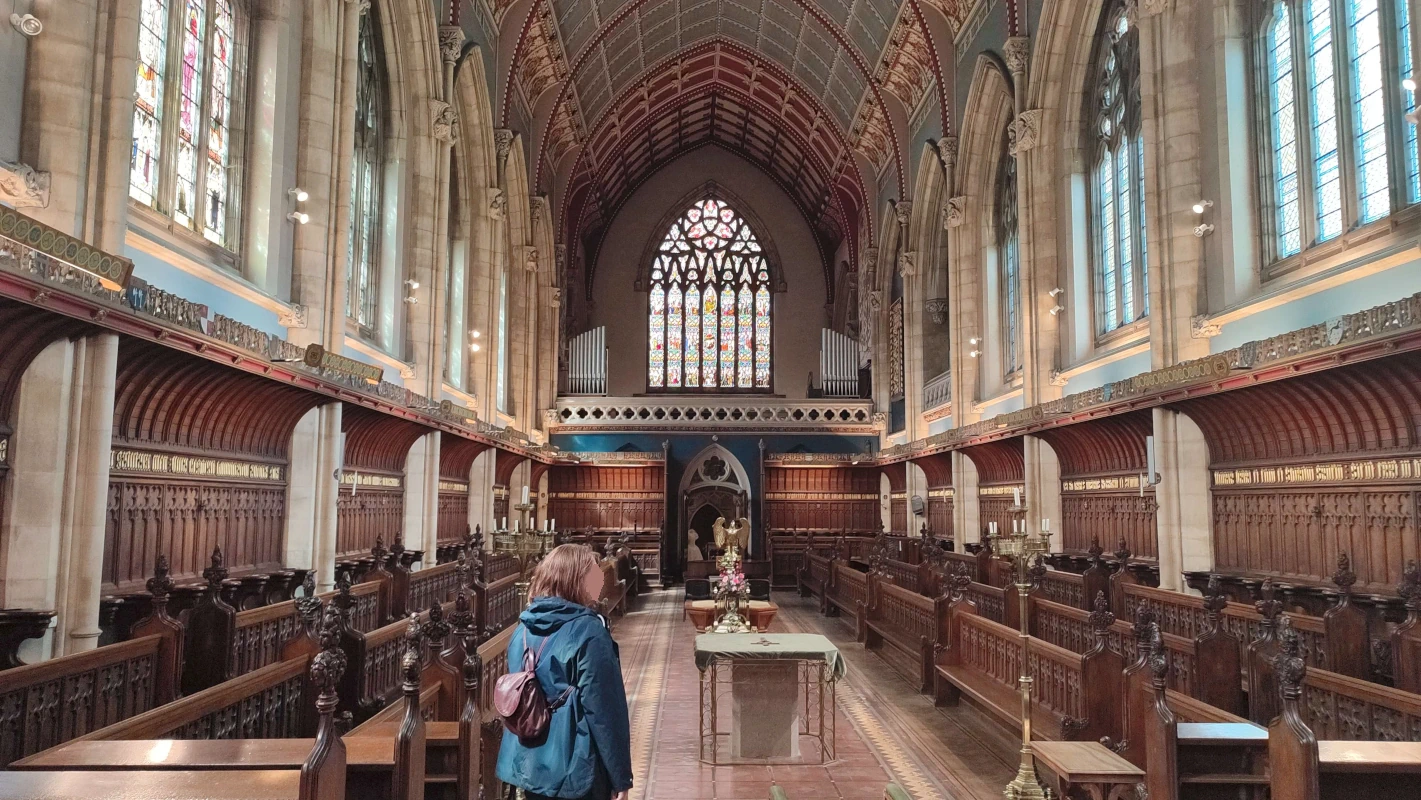
Ushaw Hall’s website plays coy about itself. You can learn that guide dogs are welcome, they’ll be exhibiting interactive “Humanimal” sculptures next month, and that they're very proud of the pun “Ushaw in”, but curiously little about what the place actually is (or was). I went anyway.
To spoil the fun, it’s an old Roman Catholic seminary that was turned into a museum when people stopped being religious enough to care. The entrance makes that well clear; walking up from the car park, the curious visitor is flanked by an ostentatious neo-Gothic chapel on their left and modernist student housing on their right. (The latter remains unmuseumified, too boring to make much out of.)
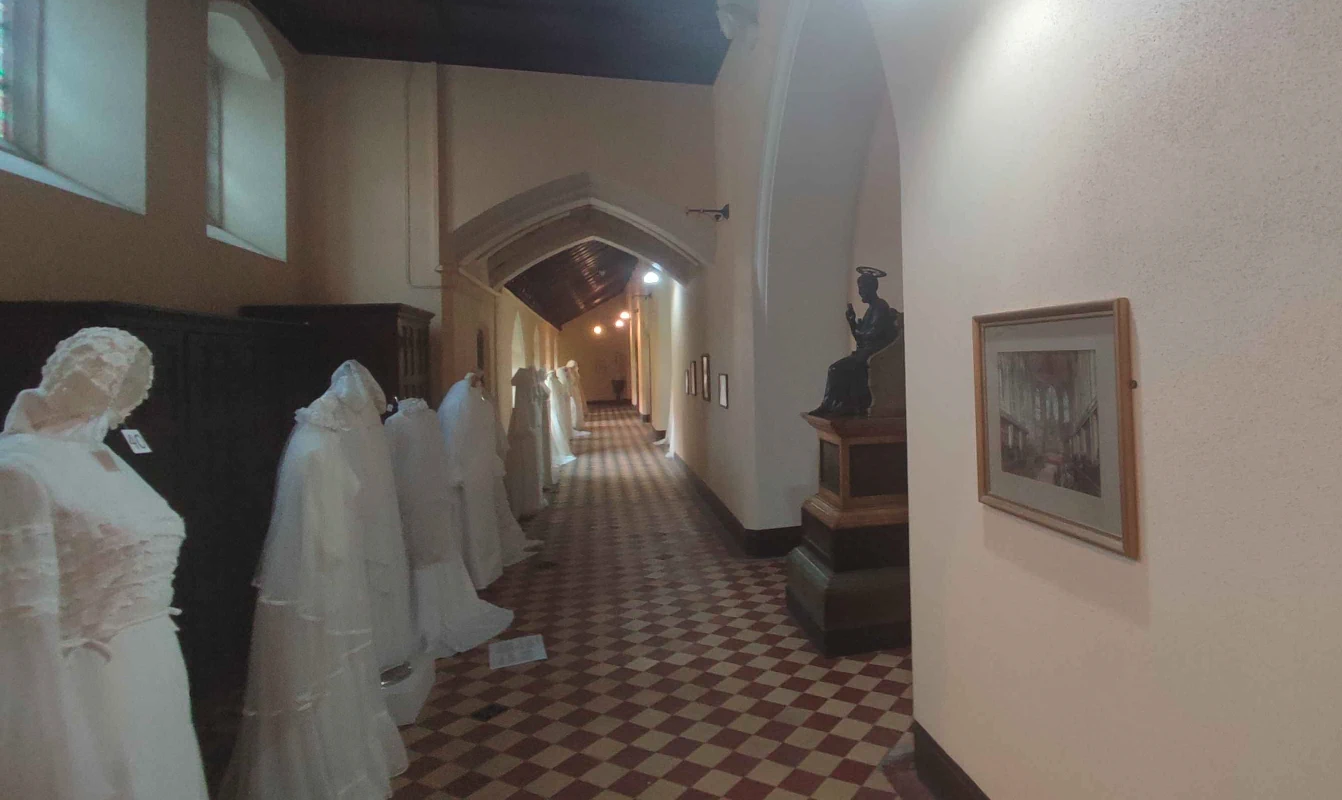
Right from reception there’s an interesting historical tidbit with a bust of Abraham Lincoln himself, who a helpful volunteer told me once attended Ushaw before he decided a more secular political career was right for him. (It was that or boxing, i suppose.) Upstairs is the Presidents’ Hall, whither the stairway looked off-limits enough not to chance it — so never mind that, and let’s instead turn right.1 This takes us down a series of winding hallways with wibbly tiled floor — as of now, an exhibition has lined them with wedding dresses old and new, including replicas of those worn by the royal family, creepy mannequin heads and all.2 More importantly and more permanently, these are the chapels of Ushaw Hall.
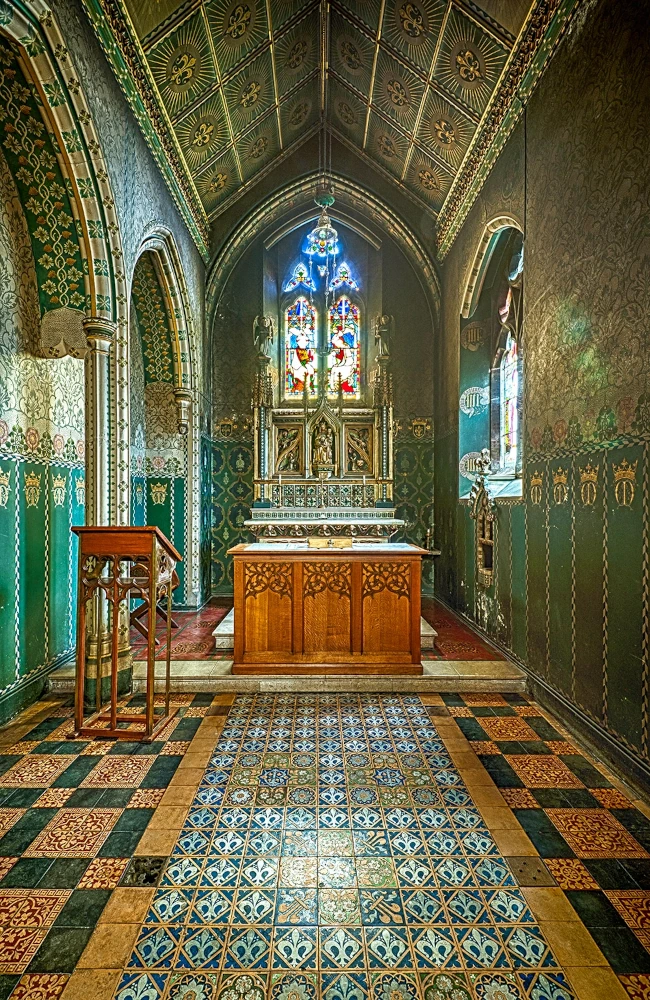
They are beautiful, and have seen better days. The paint peels from a dimly-lit mural in a nook i presume is for choirists. In others, light dances in vibrant oranges and blues through expository stained glass. The brightest of them all, seen here to the right, invites its visitors to pray for Ukraine in a solemn reminder of the times.
These smaller shrines have an intimacy to them that reflects the house’s hush-hush history. First exiled from England, the Catholics settled in the small town of Douai, in the north of France — only to be forced out again by the secular fervour of the French Revolution. Even then, they struggled to find welcome in a staunchly Protestant Georgian England, until a sympathetic aristocrat sold them land in Durham’s secluded hills. The hall itself was built with the façade of an unseeming terrace, only showing its religious nature to those within.
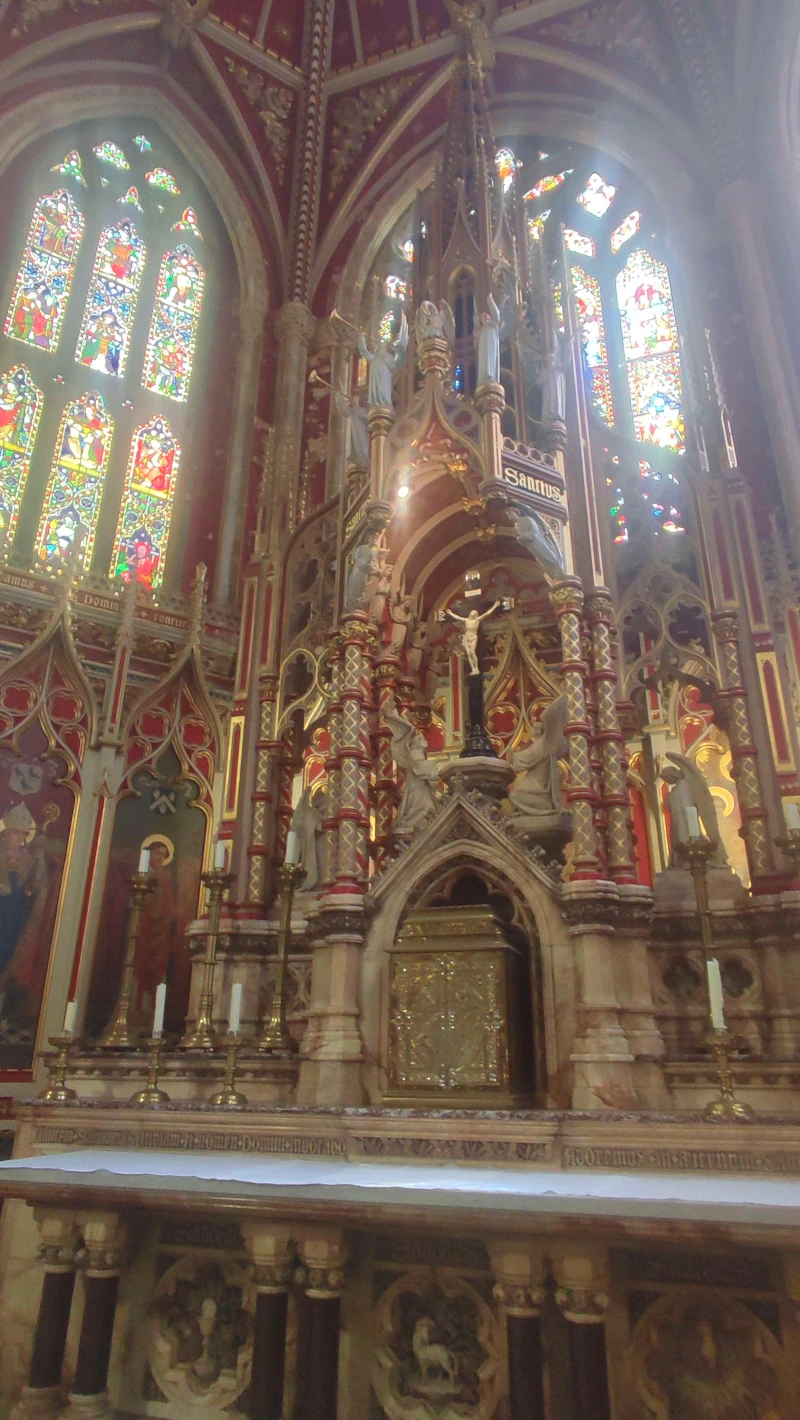
Onwards, then, into the star of the show — the main chapel. Pews upon pews span the long gap between the entrance and the colossal tabernacle, behind which the walls are adorned with what first looks like simple ornament but reveals itself to be tightly-packed black-lettered Latin. You can tell it’s Catholic by the eagle in the middle, the Vatican having never quite given up its attachment to its Roman roots.
…Upstairs is the Presidents’ Hall, whither the stairway looked off-limits enough not to chance it — so never mind that, and let’s instead turn left. Winding at right angles around the central court we first arrive at the library, or what little you can access of it. Management and the university are promising big things… eventually… once they restore everything… and catalogue it… and… oh, sod this, let’s go to the café.
[One hot chocolate later…]
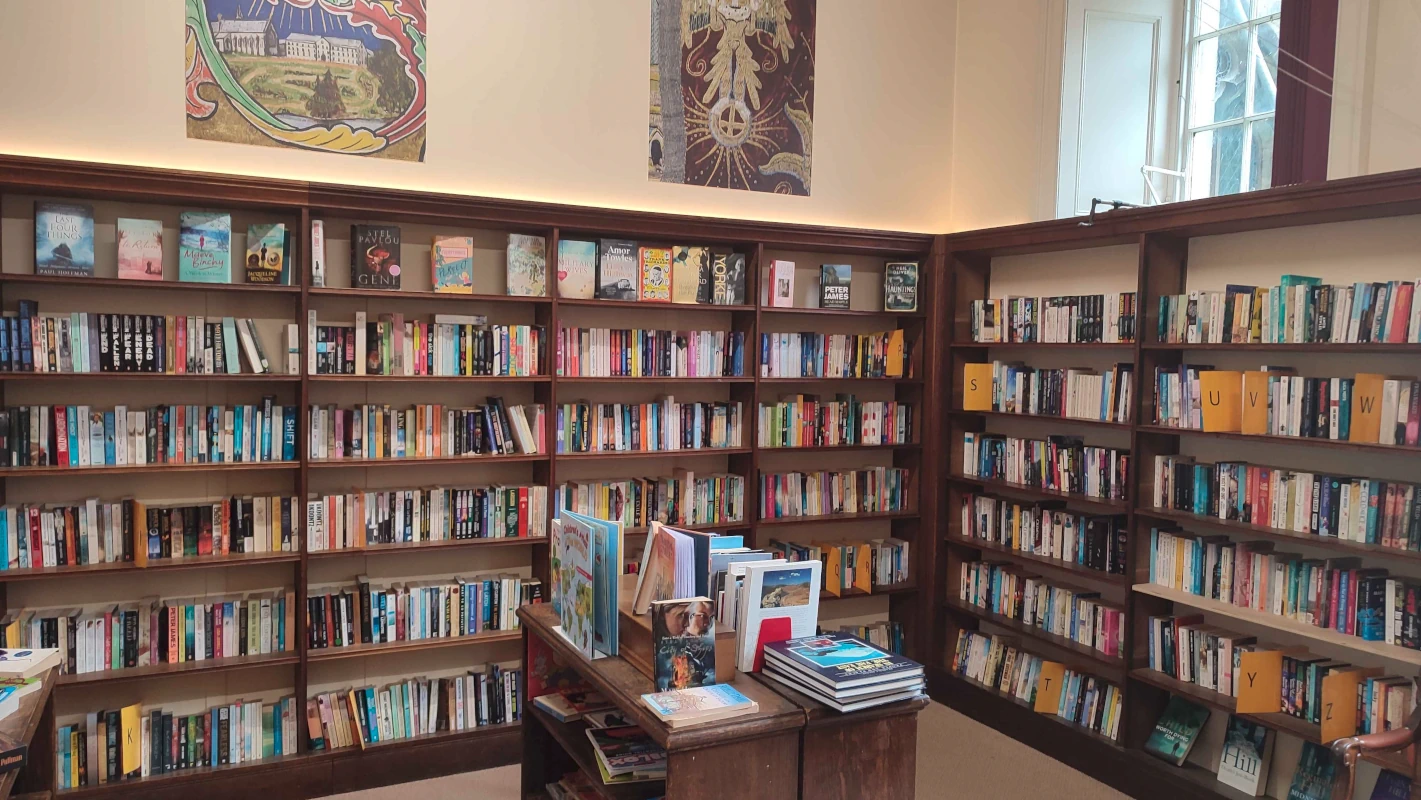
As we were. Further along we find find the mess hall, where aspiring clergy once ate in silence, with only the wet sopping of a hundred English breakfasts reverberating back and forth across the walls. These days it’s used for noisier conferences and school trips, fitted with identikit metal and plastic tables and seats which don’t do much to complement the nineteenth-century décor.
Some time later, past the temporary exhibition of inkjet printouts of old maps3, our trip comes full circle. As i walk home through the well-kempt garden and around the reedy old pond, i might not have been convinced by the seminary’s faith, but i have been convinced of their taste in interior decoration.
Information for visitors
- Admission: £10 per adult, £6 per child, free for under-fives
- Address: Ushaw Historic House, Chapels & Gardens; Ushaw Moor; Durham DH7 9RH
- Accessibility: An accessible entrance is available, and the gardens have paths suitable for wheelchairs.
- Arriving there: Accessible by car along the A167, and the 52 bus also intermittently stops.
